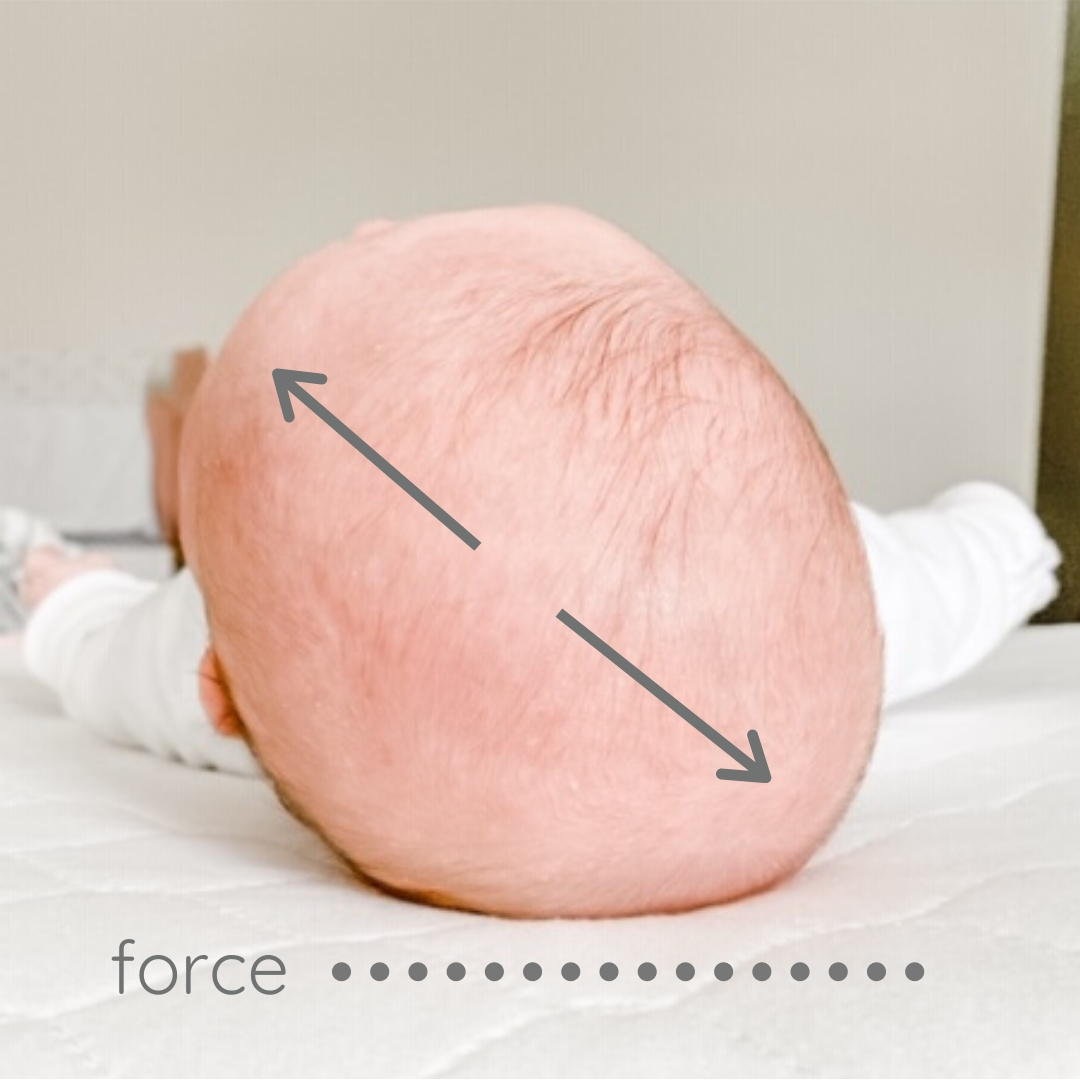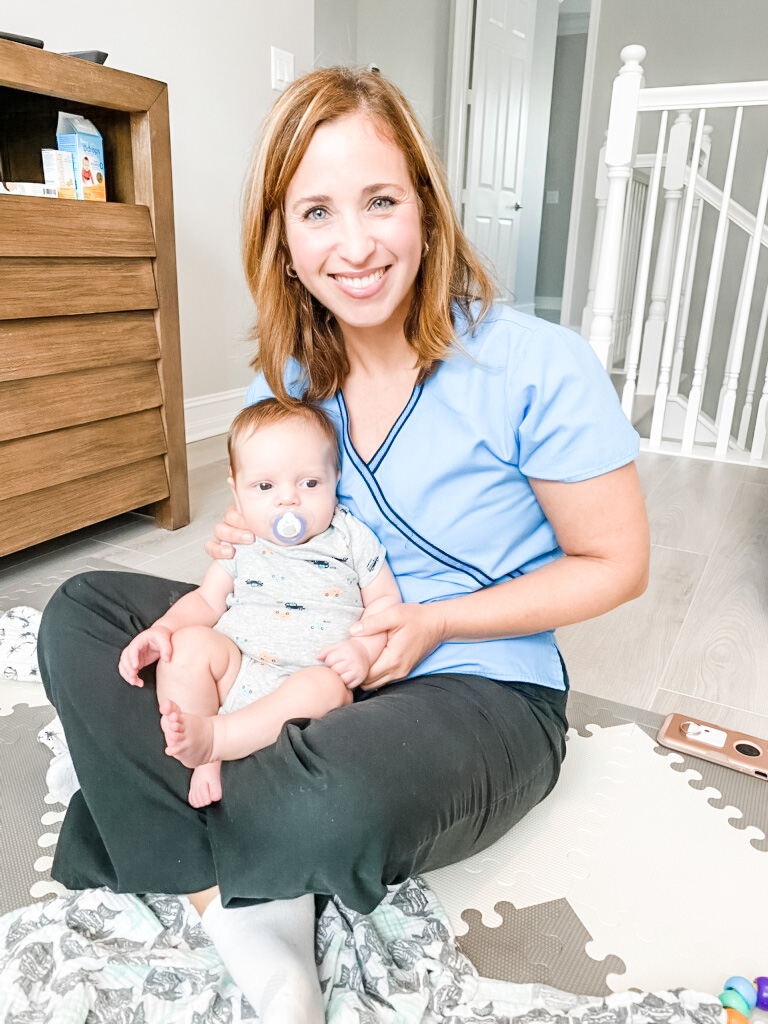What is Infant Plagiocephaly?
Because a newborn’s skull is very malleable at birth, it is susceptible to forces placed upon it. The American Academy of Pediatrics launched the Back To Sleep campaign in 1992, and it has been a huge success in preventing Sudden Infant Death Syndrome (SIDS). (Babies should always sleep on their back, alone, in a crib or bassinet.) With that, however, comes increased pressure on the back of the skull while the baby is sleeping. This can cause misshaping in the front/back/sides of head, even shifting the ears, cheeks and eyes. Flat head syndrome is now affecting 50% of our babies. The good news is with more awareness it can be prevented and then easily corrected with early intervention. This is where we come in!

3 different Types of headshapes

Plagiocephaly
- Parallelogram shape
- One ear more forward than the other
- Asymmetries in forehead
- One cheek fuller than the other
- Key feature: asymmetry

Brachycephaly
- Trapezoid shape
- Flattening across back of head
- Increased parietal width
- Sloping of forehead
- Head appears tall in the back
- Key feature: wide

Scaphocephaly
- Rectangle shape
- Long and narrow
- Flattening on both sides of the head
- Key feature: narrow
What causes flat head syndrome?
Plagiocephaly affects newborns for many reasons including:
- Sex of the baby (more common in males)
- Firstborn
- Supine/back sleeping
- Prematurity
- Intrauterine crowding
- Decreased tummy time
- Increased use of containers
- One sided handling
- Neck muscle tightness/torticollis

When Would I See a flat spot?
Believe it or not, skull asymmetries can be caused by in utero positioning, so sometimes you will notice it at birth. Most parents, however, recognize headshape differences by 2 months of age. Our goal is to have parents of newborns watching the head shape from day 1 so they can seek treatment or modify their day-to-day activities immediately.
The best way to monitor a headshape is with pictures . You are looking for volume differences in the front and back of the head. Our recommendation is to take pictures once a week (birds eye view) so flattening can be identified quickly. Watch the back of the head, as this is where you’ll see the flattening first.

How Do I Fix My Baby's Flat Head?
There are some simple things a parent can do to help with baby’s flat head. The goal is to get pressure off of the flat spot and onto the fuller part of the skull! Try these for a week or two, and if you’re not seeing noticeable improvement, a therapy referral is probably your best bet. (Remember, there is a small window of opportunity so the “wait and see” approach is not recommended.)
- More supervised tummy time
- Limit container usage (bouncy seats, boppy loungers, swings, DockATot, carseat)
- Encourage baby to look in the non preferred direction
- Change position in crib so they are facing the other way
- Switch feeding/carrying positions
Is it possible to correct a baby's flat head without a helmet?
Yes it is - but there are several factors that need to be considered - namely - age of your baby. To correct an infant flat head, an external force needs to be applied for extended periods of time. This force typically comes from strategic repositioning when the baby is sleeping on their back (which is between birth and 4 months of age). Positioning should always be your first line of defense if appropriate for your baby's age. We have perfected this skill and love to share it with families all over the world. Baby Begin knows how to round out those noggins- NO HELMET NEEDED. We have successfully treated thousands of babies since 2008, and yours can be one too. Let us help ease your mind and put a plan in place to make that little head nice and round!

